Tyrosyl-DNA phosphodiesterase 1 (TDP1) and SPRTN protease repair histone 3 and topoisomerase 1 DNA-protein crosslinks in vivo
- PMID: 37788708
- PMCID: PMC10547559
- DOI: 10.1098/rsob.230113
Tyrosyl-DNA phosphodiesterase 1 (TDP1) and SPRTN protease repair histone 3 and topoisomerase 1 DNA-protein crosslinks in vivo
Abstract
DNA-protein crosslinks (DPCs) are frequent and damaging DNA lesions that affect all DNA transactions, which in turn can lead to the formation of double-strand breaks, genomic instability and cell death. At the organismal level, impaired DPC repair (DPCR) is associated with cancer, ageing and neurodegeneration. Despite the severe consequences of DPCs, little is known about the processes underlying repair pathways at the organism level. SPRTN is a protease that removes most cellular DPCs during replication, whereas tyrosyl-DNA phosphodiesterase 1 repairs one of the most abundant enzymatic DPCs, topoisomerase 1-DPC (TOP1-DPC). How these two enzymes repair DPCs at the organism level is currently unknown. We perform phylogenetic, syntenic, structural and expression analysis to compare tyrosyl-DNA phosphodiesterase 1 (TDP1) orthologues between human, mouse and zebrafish. Using the zebrafish animal model and human cells, we demonstrate that TDP1 and SPRTN repair endogenous, camptothecin- and formaldehyde-induced DPCs, including histone H3- and TOP1-DPCs. We show that resolution of H3-DNA crosslinks depends on upstream proteolysis by SPRTN and subsequent peptide removal by TDP1 in RPE1 cells and zebrafish embryos, whereas SPRTN and TDP1 function in different pathways in the repair of endogenous TOP1-DPCs and total DPCs. Furthermore, we have found increased TDP2 expression in TDP1-deficient cells and embryos. Understanding the role of TDP1 in DPCR at the cellular and organismal levels could provide an impetus for the development of new drugs and combination therapies with TOP1-DPC inducing drugs.
Keywords: DNA repair; DNA–protein crosslinks; SPRTN; histones; tyrosyl-DNA phosphodiesterase 1; zebrafish.
Conflict of interest statement
The authors declare that they have no conflicts of interest.
Figures
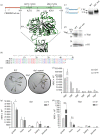
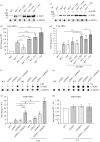
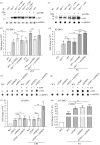
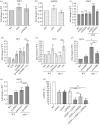
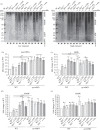


Similar articles
-
Tyrosyl-DNA phosphodiesterase 2 (Tdp2) repairs DNA-protein crosslinks and protects against double strand breaks in vivo.Front Cell Dev Biol. 2024 Aug 20;12:1394531. doi: 10.3389/fcell.2024.1394531. eCollection 2024. Front Cell Dev Biol. 2024. PMID: 39228401 Free PMC article.
-
Tyrosyl-DNA phosphodiesterase 2 (TDP2) repairs topoisomerase 1 DNA-protein crosslinks and 3'-blocking lesions in the absence of tyrosyl-DNA phosphodiesterase 1 (TDP1).DNA Repair (Amst). 2020 Jul-Aug;91-92:102849. doi: 10.1016/j.dnarep.2020.102849. Epub 2020 May 17. DNA Repair (Amst). 2020. PMID: 32460231
-
SPRTN and TDP1/TDP2 Independently Suppress 5-Aza-2'-deoxycytidine-Induced Genomic Instability in Human TK6 Cell Line.Chem Res Toxicol. 2022 Nov 21;35(11):2059-2067. doi: 10.1021/acs.chemrestox.2c00213. Epub 2022 Oct 25. Chem Res Toxicol. 2022. PMID: 36282523
-
From the TOP: Formation, recognition and resolution of topoisomerase DNA protein crosslinks.DNA Repair (Amst). 2024 Oct;142:103751. doi: 10.1016/j.dnarep.2024.103751. Epub 2024 Aug 16. DNA Repair (Amst). 2024. PMID: 39180935 Review.
-
Debulking of topoisomerase DNA-protein crosslinks (TOP-DPC) by the proteasome, non-proteasomal and non-proteolytic pathways.DNA Repair (Amst). 2020 Oct;94:102926. doi: 10.1016/j.dnarep.2020.102926. Epub 2020 Jul 10. DNA Repair (Amst). 2020. PMID: 32674013 Free PMC article. Review.
Cited by
-
Arabidopsis thaliana DNA Damage Response Mutants Challenged with Genotoxic Agents-A Different Experimental Approach to Investigate the TDP1α and TDP1β Genes.Genes (Basel). 2025 Jan 19;16(1):103. doi: 10.3390/genes16010103. Genes (Basel). 2025. PMID: 39858650 Free PMC article.
-
Tyrosyl-DNA phosphodiesterase 2 (Tdp2) repairs DNA-protein crosslinks and protects against double strand breaks in vivo.Front Cell Dev Biol. 2024 Aug 20;12:1394531. doi: 10.3389/fcell.2024.1394531. eCollection 2024. Front Cell Dev Biol. 2024. PMID: 39228401 Free PMC article.
-
SPRTN metalloprotease participates in repair of ROS-mediated DNA-protein crosslinks.Sci Rep. 2024 Dec 28;14(1):30919. doi: 10.1038/s41598-024-81799-9. Sci Rep. 2024. PMID: 39730693 Free PMC article.
References
Publication types
MeSH terms
Substances
Associated data
LinkOut - more resources
Full Text Sources
Molecular Biology Databases
Research Materials

